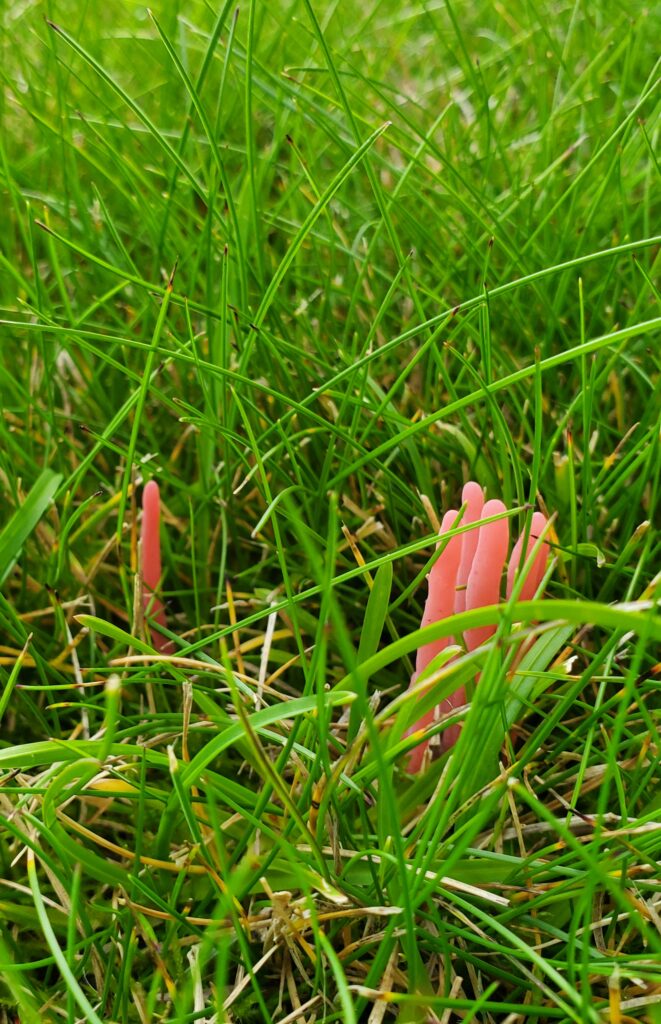With the on slot of rain we have been getting here recently on Southcentral Alaska, many of us might be noticing some new additions to our lawns that we might not have seen before. Many of us are starting to find some lovely growths that can often boggle the mind in color, shape, and form.

This is some Clavaria Rosea, that was discovered by one of our own here at AskAggie in her lawn and asked for us to identify.
Fungus like this can be new to many lawns as people hold back on mowing with this rain and find themselves with overly well watered grasses.
Fugus and other new growths that might be coming up when you hold back on mowing and over water the lawn have often been apart of your grasses or added with the last time you added seed due to the nature of commercial grass seeds. Many of these bags will have a small disclaimer stating that not all of the contents of the bag are just grass seed and that there might be some other thing mixed in either intentionally or not.
If you are also starting to notice some brown spots accompanying you new fugus friends, you might want to consider planning on adding a fungicide to your next spring seed addition. However, you want to avoid adding fertilizer to these fungus areas as this can increase their growth and spread. You will also want to take additional care when mowing over these infections as you will want to sanitize your blades and mower well after trimming the area so that you don’t transfer pieces or spores to other areas that have not been affected.
Aerating and overseeding can be additional methods to help with the healing and prevention of this issue. The largest key though to dealing with the issue is to cut back on watering and make sure you are watering in early morning and with the right amount. Of course, with Mother Nature deciding how much water your lawn gets at times, it might be best to wait it out and make a plan of treatment. At this point in the year we know that winter and frost is fast on its way, so simply mowing and aerating might be the way to go with a plan to treat in the spring as a prevention during that early new growth.


Comments are closed